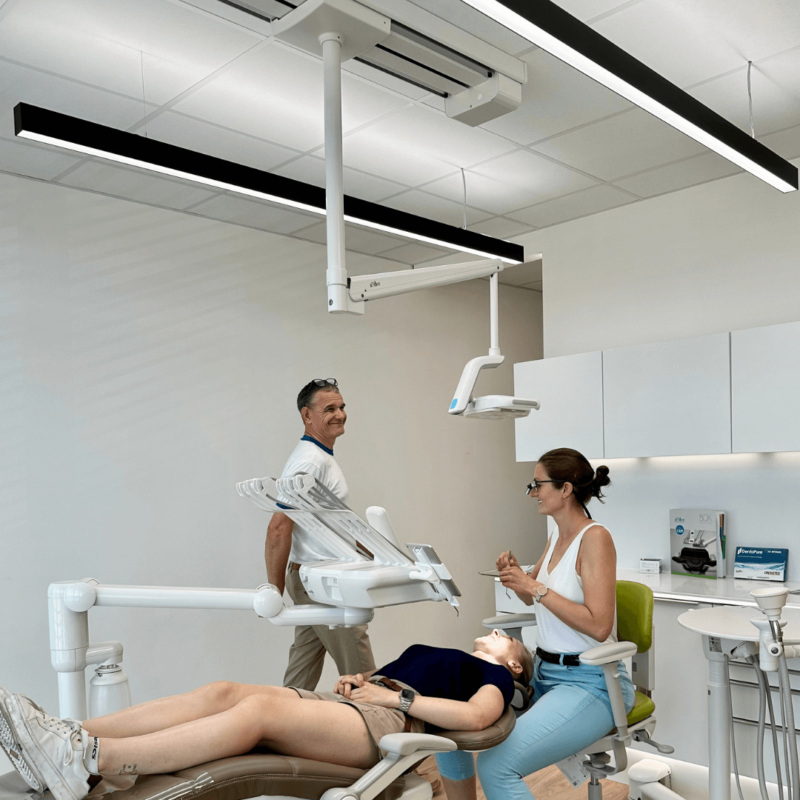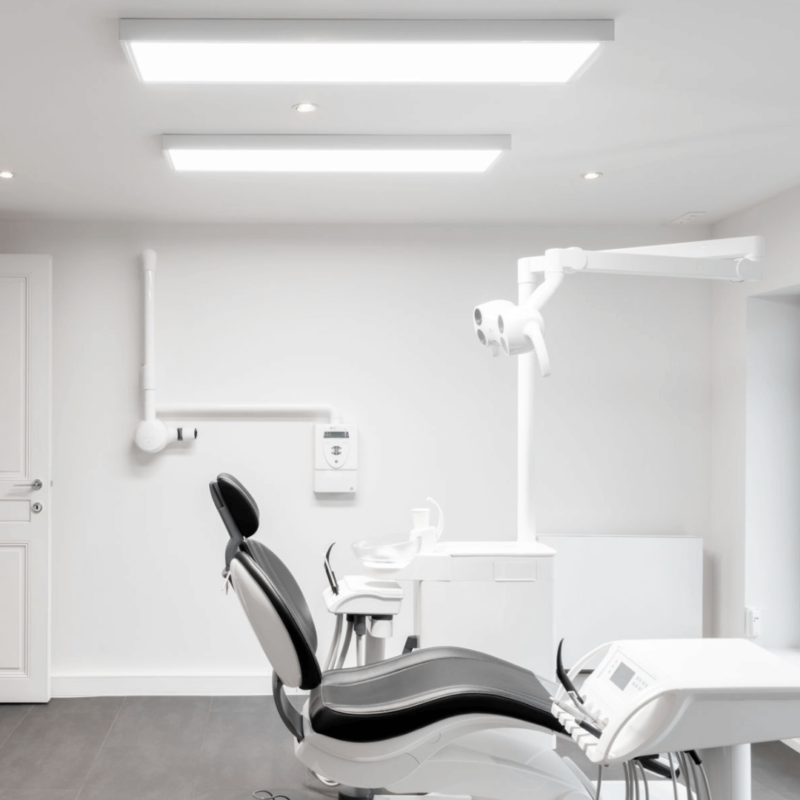How Incorrect Lighting in a Dental Treatment Room Contributes to Fatigue
In our previous article, Correct Dental Treatment Room Lighting: Strategies to Combat Fatigue and Improve Ergonomics in Dental Professionals, we explored practical strategies to optimize lighting for better ergonomics. In this article, we delve deeper into the mechanics behind why poor lighting leads to fatigue, examining the biological and cognitive processes that cause dental professionals to feel tired, strained, and less productive.
Introduction
In dental ergonomics, correct lighting in the dental treatment room plays a crucial role in the well-being of dental professionals. Poor lighting not only affects visibility but also contributes to eye strain, musculoskeletal discomfort, and overall fatigue. Dentists and dental assistants often work in demanding conditions, requiring precision and prolonged focus on small details. If the lighting is not optimized, the eyes and brain must work harder, leading to faster exhaustion and reduced efficiency.


What This Article Covers
- How incorrect lighting contributes to fatigue – Exploring the effects of visual adaptation, accommodation, and cognitive load.
- The biological mechanisms behind visual fatigue – Understanding how the eyes and brain react to poor lighting conditions.
- Why excessive energy expenditure leads to reduced efficiency – Examining the link between lighting and work performance.
Table of Contents
- How Poor Lighting Affects the Eye and Brain
- The Energy Cost of Poor Lighting
- Why Fatigue Reduces Work Efficiency and Precision
- Conclusion
1. How Poor Lighting Affects the Eye and Brain
Incorrect lighting places unnecessary strain on the visual and cognitive systems, leading to exhaustion and discomfort.
1.1 Visual Adaptation and Eye Strain
The human eye constantly adapts to different light intensities, controlled by the pupil and retinal cells. Frequent switching between bright dental lamps and dim surroundings leads to excessive pupil adjustments, causing eye strain.
Research Insight: Increased exposure to abrupt lighting changes can induce temporary visual impairment and prolonged fatigue (Stringham & Hammond, 2008).
1.2 Accommodation and the Workload on Eye Muscles
Accommodation refers to how the lens of the eye changes shape to maintain focus at different distances. In poorly lit rooms, dentists must constantly refocus their eyes between bright and dark areas, leading to muscle strain.

Research Insight: Studies show that visual accommodation effort is directly linked to increased fatigue and decreased work accuracy (Anshel, 2007).
1.3 Cognitive Fatigue and Mental Strain
The brain processes visual information, and poor lighting forces it to work harder. Constant glare, shadows, and poor contrast require extra cognitive effort to interpret visual input, leading to exhaustion.
Research Insight: A study on workplace lighting found that poor illumination increases cognitive load and stress, negatively impacting performance (Rahman, St. Hilaire & Lockley, 2018).
2. The Energy Cost of Poor Lighting
Poor lighting forces dental professionals to expend more energy throughout their workday, causing cumulative strain and fatigue.
- Eye muscles work harder due to continuous adaptation and accommodation.
- The brain expends more cognitive energy to process unclear visual input.
- Increased musculoskeletal strain due to compensatory postures (e.g., leaning closer to see better).
Research Insight: Studies on visual ergonomics confirm that poor lighting environments lead to increased physiological and cognitive fatigue in precision-based professions (Harwood et al., 2005).
3. Why Fatigue Reduces Work Efficiency and Precision
- Reduced visual acuity – The eyes become less effective at distinguishing fine details, increasing the likelihood of mistakes.
- Slower decision-making – The brain, dealing with excess cognitive load, requires longer processing times.
- Increased physical discomfort – Dental professionals often adopt poor postures to compensate for inadequate lighting.
Research Insight: Workplace lighting studies show that improved illumination reduces error rates, fatigue, and strain in medical professionals (Figueiro, Rea & Bullough, 2002).
4. Conclusion
Incorrect lighting in a dental treatment room contributes to fatigue by overloading the eyes, muscles, and brain. Poor lighting forces dentists to make constant visual adjustments, leading to eye strain, cognitive fatigue, and increased stress. While lighting solutions can address these issues, the key takeaway is that understanding the mechanisms behind visual fatigue is crucial for improving dental ergonomics and performance.